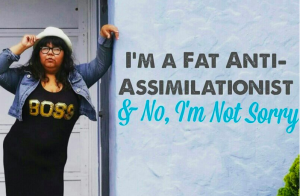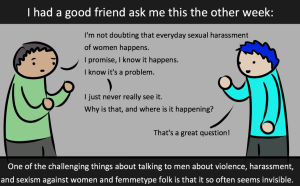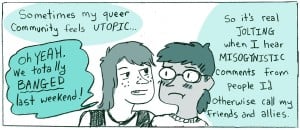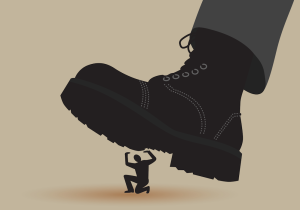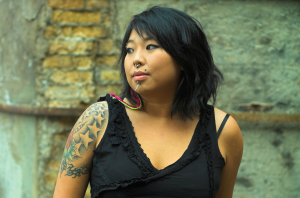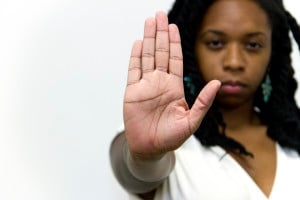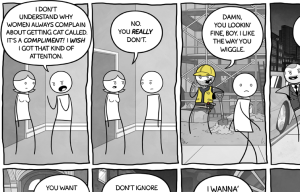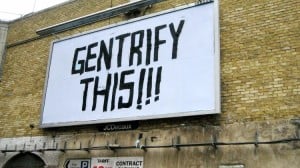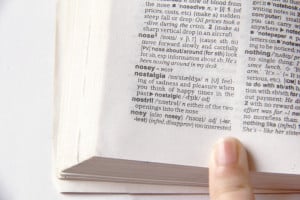My childhood was filled with a lot of confusion about my body, my gender identity, and my sexuality.
Growing up disabled and always on the edge of identifying as queer and/or trans, I had many questions about who I was and how I wanted to self-identify.
From a young age, I dealt with gender dysphoria, but I also felt like I wasn’t allowed to identify as trans. After all, I liked wearing dresses and wasn’t sure if I wanted to go on testosterone.
I didn’t realize it at the time, but I was reacting to toxic messages from society. And these toxic messages were all wrapped up in my identity as a queer/trans disabled person.
The first time I came out as trans to anyone in my “real life” – that is, not over the Internet – it was my girlfriend, and it was a learning process for both of us. I told her, at the time, that I wanted to socially transition and at least partially medically transition.
She went with me when I had my long hair cut off into an androgynous pixie, and she practiced new pronouns and names with me when we were alone.
Despite the overwhelming support I got from the trans community and from my partner, I still struggled with my ability to stick with a gender identity. I had a hard time “defending” my trans-ness in my head whenever I imagined coming out to people.
I didn’t realize it until recently, but I was internalizing a lot of toxic messages – about the trans community, about genderfluid and non-binary people, about the gender binary, about women, about AFAB people – and it was making it difficult for me to embrace my gender identity.
And society was what was creating confusion for me – not my internal experience of gender.
So these are a few of the messages I had to unpack and unlearn in order to come to terms with the fact that I’m completely valid in identifying as trans and non-binary – and proud.
Myth #1: I Can Only Identify as Trans If I Plan to Socially or Medically Transition
I struggled with accepting and embracing being trans for a long time, mainly because I had very specific ideas about what transition looked like.
As a kid and teen, I knew I was queer and had some questions about gender identity and dysphoria, too. I had a feeling that I was trans, but I also had a lot of messages in the media explicitly showing me what “transgender” looked like.
According to the media, trans people knew from birth that they didn’t identify as the gender they were assigned. This usually meant a blanket rejection of any and all cultural and social norms associated with that gender.
Also, the media usually took the story down a fairly direct path: After the trans person showed obvious “signs” of rejecting their assigned gender, they began presenting as the opposite gender, usually in fairly stereotypical and binary ways. They almost always sought out social and medical transition.
There were very few depictions of non-binary trans people.
I never saw anyone who identified as trans and used gender-neutral pronouns, or the pronouns they were assigned at birth. Most media showed trans characters thinking about medical transition, but it was never really a question of whether they wanted it, but whether they had access to do it.
After a lot of thought, I’ve decided that I don’t want to medically transition. I’m physically and learning disabled, and I’m not comfortable with the risks that different types of medical transitions pose to me because of my specific health conditions.
The only thing I’ve done medically to assert my trans-ness is go on a permanent cycle of birth control – I haven’t had a menstrual period in six years, and it’s a choice that I’ve found was medically beneficial to me in other ways beyond my gender identity.
For those reasons, I’ve always worried that I can’t really be trans, because I’m not thinking about taking testosterone or having any surgeries, unless those surgeries coincide with other health conditions. (I have a history of breast and ovarian cancer in my family, and I admit I won’t be sad if I have to have either removed at some point to mitigate risk.)
I’ve struggled to embrace my trans identity because I felt I wasn’t “transitioning enough.”
Choosing to transition is a choice. Regardless of what someone’s gender identity is, it’s a trans person’s decision whether they want to transition at all – socially or medically – and if they do, how they want to do that.
It’s not always a linear process, and like most things in life, it doesn’t always fall into the neat packages that we’re shown in movies or on TV.
Myth #2: AFAB People Can’t Identify as Trans or Non-Binary If They Present as Femme
For years, I’ve publicly and personally referred to myself as cisgender because I present as femme, and I’m usually gendered female by strangers who are making assumptions about my identity.
Because I fit most people’s idea of “woman,” I often feel like I can’t identify as trans or non-binary, even though I know that’s what fits.
I wear dresses and skirts. I wear my hair long. I’m physically small, so I’m usually interpreted as feminine as a result. For these reasons, I often feel like my gender dysphoria – and the way I identify on the inside – don’t matter.
I also go by a stereotypically feminine name, and I have no problem with she/her pronouns. So, it’s easy for people to mistake me for a cisgender woman.
It’s taken me a long time to unpack this one, but what it boils down to is: There’s no right or wrong way to be trans. There’s no one way to be trans. If you feel trans, you are.
For years, I thought I had to present as more typically androgynous in order to be trans, especially since I’ve decided not to transition in any linear way.
When I had short hair, I felt like my trans-ness was more valid, and counted somehow – even though it’s just hair. Once I made the decision to grow my hair out again (not out of any lack of trans identity, but simply because I thought, “Hey, I look better, in my personal opinion, with long hair and bangs”), I struggled with whether I was trans anymore.
I have friends and family who identify as women who have short hair, and who have shaved their heads completely, all without coming out as trans or genderqueer. Their gender identities are fully valid, and so is mine.
I may not want to socially or medically transition in a way that aligns with what most people expect, but I experience daily gender dysphoria, and I don’t feel like woman is a word that fits me.
I’m interested in openly exploring all the femme, masculine, and in between areas of who I am, without worrying about whether or not they fit into what’s expected of trans folks.
Myth #3: If I Don’t Use Gender-Neutral Pronouns, I Can’t Identify as Non-Binary
I completely understand why many people use gender-neutral pronouns. I’ve thought about using them myself, and have experimented with attaching them to my name and personhood to see if they fit.
It turns out, I don’t feel uncomfortable using she/her pronouns, and they work fine for me right now. I’m not making any specific choice to use gender-neutral pronouns, and I’m not asking my friends and family to either.
Because of that, I’ve always worried that I can’t fall under the trans or non-binary umbrellas.
I’d always assumed that if you weren’t socially or medically transitioning, you had to at least use gender-neutral pronouns and present in an overtly androgynous way to be considered “really trans.”
That’s a toxic message I had to unlearn.
Since there’s no one way to be trans, I realized that if I feel trans, I am trans.
Enforcing the idea that trans people can only exist if they check certain boxes is another way of reinforcing the gender binary, and trapping people into clearly delineated gender roles.
I don’t use they/them pronouns right now. I may someday, but at this time, I’m okay with she/hers, and I’m still trans and valid.
Myth #4: I Can’t Be Disabled, Queer, and Trans
I’ve heard this one before: “That’s too many marginalized identities for one person! You just want to be special. Is this the Oppression Olympics?”
For a while, I’ve felt like I can’t identify as trans because it’s too many marginalized identities for one person. It would simply make me so diverse that, according to many people, I wouldn’t even exist.
As my girlfriend (a Latinx and Hispanic bisexual) often jokes, I would be “a unicorn.”
I’m disabled and queer, and I’ve been fairly out about both of those identities for a few years now. I also grew up low income, and this plays into every decision I make (including the ones surrounding medical transition, which can be a costly process even with health insurance coverage). And, to top if all off, I consider myself on the asexual spectrum.
For that reason, I’m often left feeling that I’m already “marginalized enough,” and I don’t need to “add another identity” onto my list of oppressions.
But the fact is: I’m undeniably trans. I’ve felt trans since I was very young, and even though I haven’t always known what that means, or what I’m going to do about it, that doesn’t make me any less trans.
Being disabled and queer (a label that I sometimes use as a blanket to mean “queer in both my gender identity and my orientation”) doesn’t make me incapable of being trans. They’re simply intersecting identities that make up my experience.
Myth #5: I Can’t Identify as Trans Because I Changed My Name to Something Femme
A few years ago, I went through a social and legal name change. I’d spent all of my life hating my name and feeling like it didn’t belong to me (my first memory of asking to legally change it was at age seven), and I made the decision to change it.
Although my name change and the feelings that go with it are wrapped up in my trans identity (as well as in my disabled identity and my identity as a rape survivor), it felt totally separate because I chose a feminine name, not a gender-neutral or masculine one.
Names, just like hair and clothing, are not inherently gendered. It’s society that dictates which names are typical for which gender(s) – and that’s something that varies based on culture and is ever-changing.
Still, I fed into the toxic message that because I chose a femme name, I could no longer identify as trans. It felt like a decisive stamp saying, “Okay, me doing this means that I’m no longer trans and will never want to make any other social or medical transitions, now or in the future.”
I also felt like I couldn’t discuss my name change in trans spaces or talk about what it meant to me, as a trans person, to assert my name change as a non-negotiable part of who I am, because I wasn’t also changing my pronouns.
I felt like if I spoke up in trans spaces or identified with the community, I’d be seen as a faker or as a cisgender outsider who didn’t really know what being trans meant.
Just like with hair, clothing, and any other identifying markers that we typically associate with a specific gender, the idea that names are gendered is a social construct that is a part of the larger gender binary.
One facet of my activism is to get rid of the idea of gendered names altogether – not assuming Ms. or Mr. (or using either, unless someone specifically states it), asking pronouns when we meet new people instead of assuming and labeling, and getting rid of the idea that names have any ties to a specific gender.
Myth #6: If I Don’t Want to Be a Man, I Can’t Be Trans
As a kid and teen, the biggest reason I felt trans was because I experienced severe gender dysphoria. Most of what I experienced directly related to biology and my body, not to the social expectations of gender.
I’m lucky that I was raised by disabled feminist parents who taught me to reject social norms and who were totally okay with me presenting my gender however I wanted, whenever I wanted.
When I started thinking about coming out publicly as trans, one major thing stood in my way: I really don’t believe in the gender binary, and I really have no desire to “be a man.”
In the US (and many other countries), men are overwhelmingly socialized into toxic masculinity. I didn’t have a name for this when I first started embracing my gender identity, but it affected my ability to come out and feel valid in being trans.
I dealt with gender dysphoria, and was interested in socially and legally changing my name, identifying as non-binary, and, at the time, potentially considering medical transition options. I didn’t feel like a woman, but I also knew I didn’t want to be a man.
In American society, because of toxic masculinity, being a man meant I couldn’t do so many things I’ve loved about my life: cry when I’m feeling sad, be open about my emotions as well as others, act as a nurturer or caregiver, wear dresses and skirts, wear my hair long (without being called a hippie or hipster), show a lot of excitement when I’m happy, or be physically affectionate.
I’m a huge cuddler who wears some pretty colorful high femme outfits, and glitter is pretty much my favorite color – so I assumed that being trans was out of the question. What I didn’t recognize was that I had no problem with the idea of identifying as a man or non-binary. I just had a problem with the toxic masculinity that runs rampant in our culture.
Once I figured that out, I tried to set aside everything I associate with the gender binary. When I took all that away – my stereotypically masculine and feminine likes and dislikes – did I still feel trans? Did I identify as trans and non-binary?
The answer was yes, and as I’m embracing that, I’m also rejecting toxic masculinity.
***
It’s a toxic minefield out there in terms of gendered messaging, both for cis people and for trans people, no matter how we identify. Inclusive language and open discussions about gender identity are the first step to dismantling these toxic messages, but it’s definitely an uphill battle, and one that sometimes exhausts me.
Because I’m also disabled, I’m also often caught in the middle: I want to celebrate the body I’m in regardless of the differences it has from what’s considered normal, but I also deal with gender dysphoria that affects my body image.
This complexity has always shaded my understanding of my gender identity, because I want to practice radical self-love, but sometimes need to be patient with myself when I’m struggling with dysphoria.
I’ve changed a lot – and learned a lot more about intersectional feminism – since I first came out to my girlfriend as a senior in high school, but what hasn’t changed boils down to this: I identify as trans because my gender identity doesn’t fit with the one I was assigned at birth, and even though my transition hasn’t always been linear and doesn’t match expectations, my identity is still valid.
[do_widget id=’text-101′]
Alaina Leary is a Contributing Writer for Everyday Feminism. She is a Bostonian currently studying for her MA in publishing at Emerson College. She’s a disabled, queer activist and is on the social media team at We Need Diverse Books. She can often be found re-reading her favorite books and covering everything in glitter. You can find her at her website or on Instagram and Twitter @alainaskeys. Read her articles here.
Search our 3000+ articles!
Read our articles about:
Our online racial justice training
Used by hundreds of universities, non-profits, and businesses.
Click to learn more





